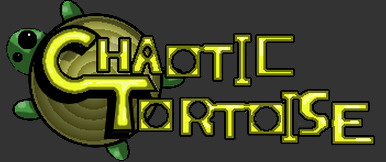I am ever trying to learn the art of Game Design through trial and error, or as I like to call it, error and error (which if you learn by making mistakes is twice as efficient).
 One element of the design process that routinely throws roadblocks up in my path is the graphical development. When you start making your game, it is inevitably not going to look like a polished game unless you’re making text only interactive fiction, and even then you might end up changing the font. This is unavoidable and is something that you shouldn’t be worried about, but there’s a balancing act here whereby you need to get it looking like something you’re at least partially happy with, otherwise you’re not going to work on the game at all.
One element of the design process that routinely throws roadblocks up in my path is the graphical development. When you start making your game, it is inevitably not going to look like a polished game unless you’re making text only interactive fiction, and even then you might end up changing the font. This is unavoidable and is something that you shouldn’t be worried about, but there’s a balancing act here whereby you need to get it looking like something you’re at least partially happy with, otherwise you’re not going to work on the game at all.
I am awful at working on things at the best of times, but I so frequently get stumped by the issue of working with placeholder graphics. I want the game to look like its polished state from phase one and that urge can damage development and general productivity.
For anyone not quite up to speed with what I’m going on about, this is what I mean. Below are some sprites from a platform game I started working on a while back.
Stage One
This is the main character’s sprite. This is also a rectangle. If you look closely you can see two blue eyes. As I moved this around the map in place of what the main character was actually going to look like, it made me get grumpier and grumpier that it was just a rectangle with two eyes, and so I started crudely chipping away at the block, trying to remove all pixels that did not look like a ninja.
Stage Two
As a pixel sculpture, you can at least tell what it is. I even put in a little animation cycle so I could see he was running along, but herein the problem had started rolling down the gentle slope and was not going to be fully halted by this measly effort.
Stage Three
And so we’re brought to this. The eagle eyed among you might have noticed a problem. My initial placeholder graphic is a completely different size to my final one. This greatly affects elements of gameplay and meant that I had to rework a lot of what I had already done. Also, with this (slightly) more elaborate animation cycle came a glimpse of a much higher quality product which made me want to work on the graphics even more.
I suppose the lesson here is that game design is a colossal discipline and trying to make something by yourself exposes the project to all of those little mental ticks and quirks that you have jumping up and down all over your work, ultimately rendering it as something you no longer want to work on. I can definitely see the attraction of getting an art-focused person to work on the art and a programming-focussed person to focus on the actual mechanics.
I do this as an on again off again hobby, so that’s fine with me, but how the full time one-man studios have the willpower to push on through little quirks like this I don’t know. I’m hoping it’s something that you make a mistake with once, learn, and never make the same mistake again, but I suppose only time will tell on that one.
Friday Game Design words of wisdom: Make sure your actual graphics are the same size as whatever you’ve been using as a template to program with or things will no longer fit together.



